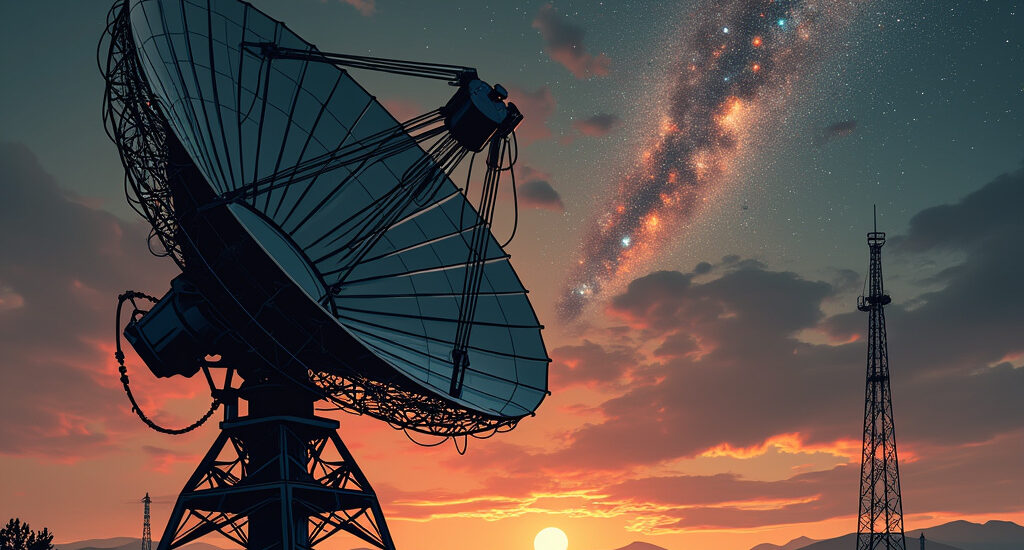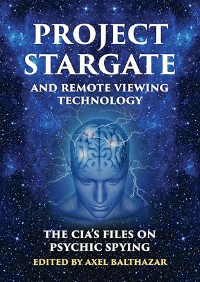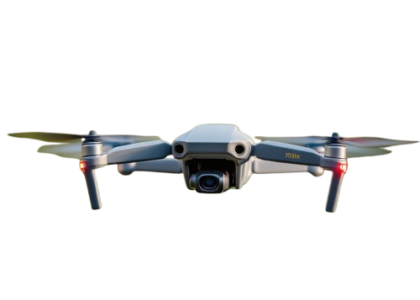You’ve probably heard the whispers: a filmmaker claims that NASA has found evidence of alien life, and the proof is set to be released in just a month. But before you get your hopes up, let’s take a closer look at the story. The supposed discovery is linked to a mysterious signal detected in 2019, which has been hotly debated ever since. While the Oxford-led project Breakthrough Listen has confirmed they’re analyzing the signal, they’ve been tight-lipped about the source. So, what’s really going on? Should you be excited, or is this just another false alarm?
Key Takeaways:
- Alien Life Evidence: A filmmaker claims that an Oxford-backed program has found evidence of non-human intelligence in our galaxy, which will be released in less than a month.
- Signal from Proxima Centauri: The signal, a five-hour-long burst of radio waves, appeared to come from a region around Proxima Centauri, a star about 4.2 light-years away from Earth.
- Breakthrough Listen: The Oxford team has confirmed they are analyzing the signal, but have not revealed the likely source, and a source inside the $100 million nonprofit Breakthrough Listen claims it has finally found proof of alien life.
- Race Against Time: The filmmaker believes that Breakthrough Listen is in a race against time to beat Chinese government researchers to publication with their findings, as the Chinese might be close to confirming a similar signal.
- SETI Efforts: Breakthrough Listen is a privately funded, decade-long research project that has been searching for extraterrestrial signals, and although they haven’t found any conclusive evidence yet, they continue to examine nearby stars for signs of life.
The Claim of Alien Life
Are we on the cusp of a groundbreaking discovery? The rumors are swirling, and the anticipation is building. Could it be true that we’ve finally found evidence of alien life? You’re probably skeptical, and rightly so. After all, we’ve been down this road before, only to be disappointed by false positives and misinterpretations.
The Signal from Proxima Centauri
Any signal detected from Proxima Centauri, our nearest neighboring star, would be a monumental find. The signal in question, a five-hour-long burst of radio waves, has been hotly debated since its detection in 2019. While the Oxford team has confirmed they’re analyzing the signal, they’ve been tight-lipped about the likely source.
The Breakthrough Listen Project
Claiming to have found proof of alien life, the Breakthrough Listen project has been making headlines. But what exactly is this project, and what makes them so confident in their findings? As a $100 million nonprofit research initiative, Breakthrough Listen has been scanning the skies for signs of extraterrestrial life since 2016.
Signal detection is a complex process, and the Breakthrough Listen team has been working tirelessly to separate the signal from the noise. With their radio telescope-based search, they’ve been sifting through billions of radio channels, looking for that one telltale sign of intelligent life. While they’ve had false starts in the past, their latest findings have sparked renewed excitement. But will they be able to confirm their suspicions, or will this signal turn out to be just another false positive?
The Evidence
Any claim of discovering alien life would require robust evidence to back it up. In this case, the evidence comes in the form of a five-hour-long burst of radio waves detected by telescopes on Earth.
The Five-Hour-Long Burst of Radio Waves
Almost any unusual signal detected by radio telescopes would spark excitement, and this one is no exception. The signal, which appeared to originate from a region around Proxima Centauri, has been hotly debated since astronomers first detected it on April 29, 2019.
The Analysis of the Signal
Among the key challenges faced by the Oxford team is analyzing the signal, which is very weak. According to Simon Holland, the signal is currently in the “low information zone,” making it difficult to rule out even the most incredible theories.
Burst signals like this one are notoriously difficult to verify, and the team has been working to eliminate any possibility of interference or equipment malfunction. While the signal’s characteristics are consistent with hypothesized technosignatures, the team’s provisional conclusion in 2021 was that it was likely a false positive or an artifact of Earth-based interference from human technologies. However, Holland’s source inside the Breakthrough Listen project suggests that the team’s opinion may have changed, and they might be on the cusp of confirming that this signal is indeed of extraterrestrial origin.
The Delay in Publishing the News
Not surprisingly, the announcement of such groundbreaking evidence has been delayed, and you’re probably wondering why. The truth is that the team behind Breakthrough Listen is being cautious, and rightly so. They want to ensure that every aspect of the signal is thoroughly analyzed and confirmed before making any grand claims.
The Technical Hurdles Faced
Publishing news of this magnitude requires overcoming significant technical hurdles. The signal itself is very weak, making it challenging to distinguish from background noise. Additionally, the team needs to rule out any potential sources of interference, such as human-made radio signals or instrumental errors.
The Need for Further Confirmation
Beside the technical challenges, the team also needs to confirm that the signal is indeed of extraterrestrial origin. This requires a meticulous process of verification and validation, involving multiple lines of evidence and expert analysis.
Delay in publishing the news is understandable, given the stakes involved. The team wants to avoid making a false claim, which could damage the credibility of the entire field of astrobiology. By taking their time to thoroughly investigate the signal, they can ensure that their findings are robust and reliable, and that the world is ready for the implications of such a discovery.
The Source of the Signal
Now, the question on everyone’s mind is, what is the origin of this mysterious signal? While the Oxford team remains tight-lipped about the details, filmmaker Simon Holland claims that his source within the Breakthrough Listen project has confirmed that the signal is of non-human intelligence.
The Possibility of Non-Human Intelligence
Possibly, the most intriguing aspect of this signal is its potential to be of extraterrestrial origin. Holland’s source suggests that the signal is not a natural phenomenon, but rather a technological signature, which has sparked excitement and debate in the scientific community.
The Characteristics of the Signal
By analyzing the signal, researchers have found that it is a narrow electromagnetic spectrum, which suggests that it is a single point source, unlikely to be local or noise from deep space. The signal’s characteristics are broadly consistent with hypothesized technosignatures, leading some to believe that it could be evidence of an advanced alien civilization.
Hence, the signal’s unique properties have led researchers to consider the possibility that it is a transmission from an extraterrestrial source. While the signal is weak, the fact that it has been detected multiple times and appears to be coming from a specific region around Proxima Centauri has sparked intense interest and speculation.
The Competition from China
All eyes are on the Breakthrough Listen initiative, but you shouldn’t forget about the competition from China. With their massive Five-hundred-meter Aperture Spherical Telescope (FAST) program, also known as “Heaven’s Eye,” they’re hot on the heels of Breakthrough Listen in the search for extraterrestrial life.
The FAST Program
With its enormous size, FAST is capable of detecting even the faintest signals from distant stars. Although a curious announcement from China’s state-backed publication Science and Technology Daily was retracted, it’s clear that FAST is a force to be reckoned with in the search for alien life.
The Race to Publication
The clock is ticking, and it’s a race against time for Breakthrough Listen to publish their findings before the Chinese government researchers beat them to it. Will they be able to confirm the signal from Proxima Centauri before the Chinese make their own announcement?
A lot is at stake in this scientific showdown. The discovery of alien life would be a groundbreaking moment in human history, and whoever publishes their findings first will reap the rewards of international recognition and acclaim. As you wait with bated breath for the announcement, remember that the scientific community is not immune to the pressures of competition, and the outcome of this race may have far-reaching implications for the future of astrobiology research.
The History of the Signal
Once again, you find yourself on the edge of your seat, wondering if this could be the moment when humanity finally discovers evidence of extraterrestrial life. But before we examine the latest developments, let’s take a step back and revisit the history of the signal.
The Initial Detection in 2019
Initially, the signal was detected on April 29, 2019, by the Parkes radio telescope in Australia, as part of the Breakthrough Listen initiative. The five-hour-long burst of radio waves seemed to originate from a region around Proxima Centauri, a star about 4.2 light-years away from Earth.
The False Positive Theory
History has shown us that excitement can often be followed by disappointment. In 2021, the Breakthrough Listen team announced that the signal was likely a false positive, resulting from human interference or equipment malfunction.
And that’s exactly what happened. The team discovered that the signal closely resembled other Earth-based signals, leading them to believe that it was probably just radio wave pollution coming from our own planet. But, as we’ll explore further, this theory may not be the final word on the matter.
Summing up
Drawing together the threads of this intriguing story, you’re left with a healthy dose of skepticism regarding the announcement of evidence of alien life. While filmmaker Simon Holland claims that a signal from Proxima Centauri has been identified as non-human intelligence, the lack of concrete evidence and the Oxford team’s delay in publishing the news raises more questions than answers. As you weigh the possibilities, remember that the scientific community requires rigorous proof before making such groundbreaking claims, and it’s important to approach this news with a critical eye.
Final Conclusion
While all of this sounds promising, the people making these claims fail to cite the other “known” about the Proxima Centauri System. Proxima B, as far as we know, is tidally locked and doesn’t rotate, which means that one side of the planet is likely super hot, the other super frigid, and the termination lines between the two sides would be the temperate areas, which severely limits the prospects for complex technological life to develop there. That doesn’t mean that there isn’t some other species’ “outpost” there, but this is all conjecture anyway.
So, I’m not holding my breath on this one, and neither should you. Every bit of further research that I have done on this leads down a dead end path of “nopes”.
So, if the Chinese were to announce something about it, along with a Western entity, I’d be surprised, and also looking for their proof. Is there ANOTHER habitable planet hiding in that system that we don’t know about? Again, Conjecture.









